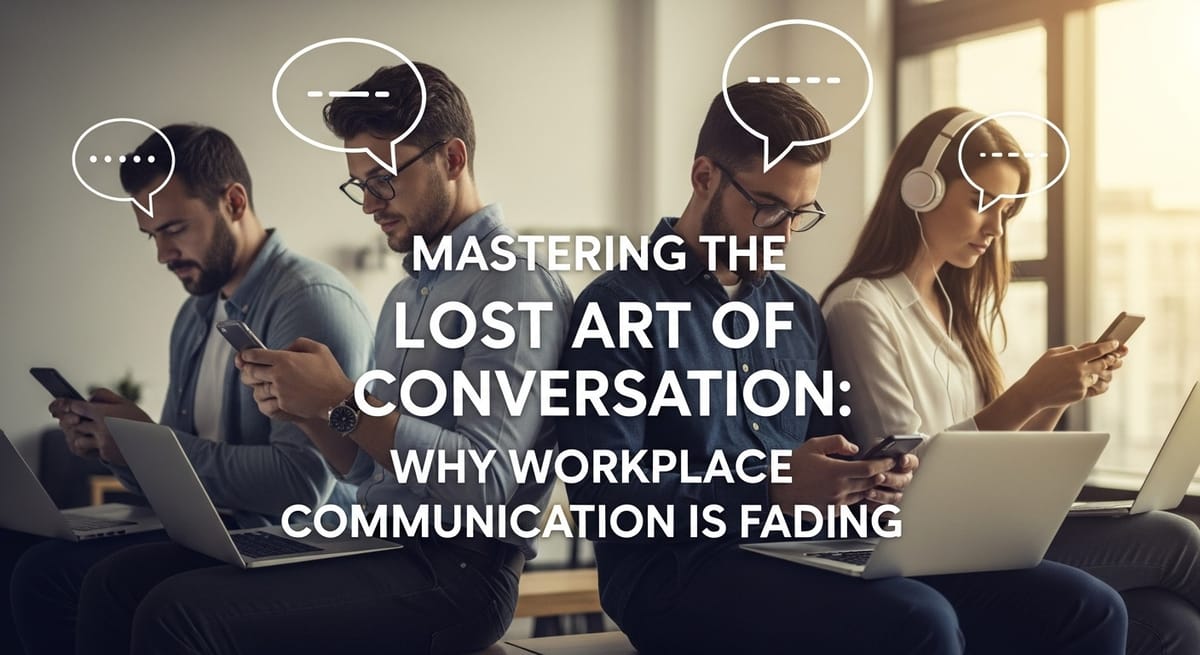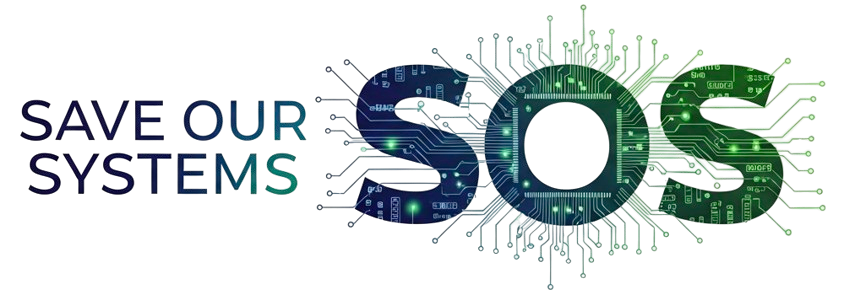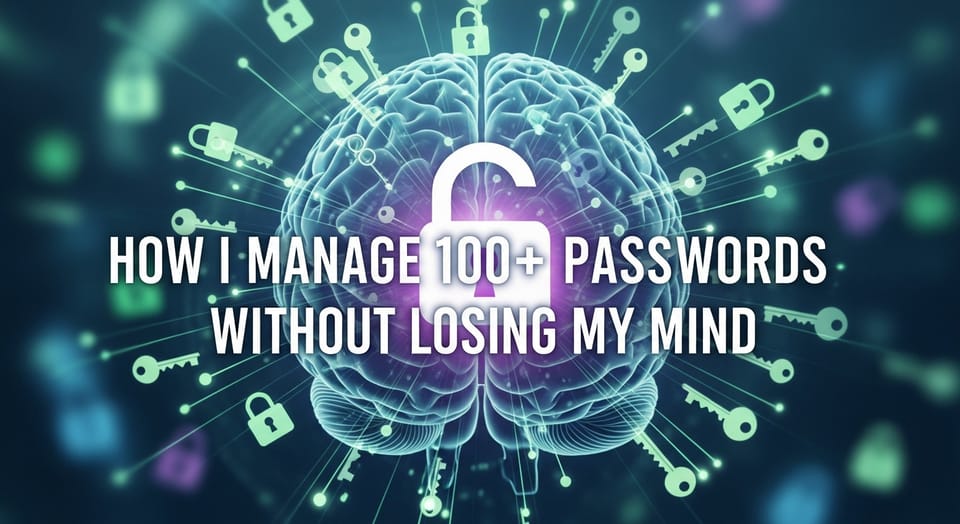Mastering the Lost Art of Conversation: Why Workplace Communication is Fading

In an era dominated by digital interfaces and remote work arrangements, something fundamental is disappearing from our professional lives: the art of meaningful conversation. While technology has connected us in unprecedented ways, it has simultaneously eroded our ability to engage in rich, nuanced workplace dialogue. This decline in conversational prowess isn't merely a cultural shift—it represents a significant challenge with measurable impacts on organizational performance, employee satisfaction, and innovation.
The Vanishing Art of Workplace Dialogue
The evidence points to a troubling decline in effective communication skills within today's workplace environment. Multiple factors contribute to this concerning trend, with research from the Society for Human Resource Management revealing that 80% of employers now cite poor communication as one of their biggest organizational challenges.
The digital transformation of work has fundamentally altered how we interact. Text-based and digital communication have largely replaced face-to-face interactions, with Harvard Business Review analysis confirming that while digital tools enable connectivity, they often lack the richness of in-person conversation. This shift has been dramatically accelerated by the COVID-19 pandemic, which normalized remote work arrangements that rely heavily on virtual communication channels.
Perhaps most concerning is the impact on attention itself. Constant smartphone usage and digital notifications have been linked to reduced attention spans and diminished listening skills, making sustained, meaningful conversation increasingly difficult to achieve in professional settings.
Understanding the Neuroscience Behind Conversations
The quality of our conversations is deeply rooted in neuroscience. Research published in the Journal of Neuroscience demonstrates that successful conversations activate the brain's reward pathways, releasing dopamine and creating positive psychological associations that reinforce connection.
During face-to-face interactions, our brains engage mirror neurons, allowing participants to subconsciously mirror each other's emotional states and build rapport. The brain simultaneously processes multiple information streams, including verbal content, tone, facial expressions, and body language—a rich tapestry of inputs that digital communication often reduces or eliminates entirely.
Psychological safety also plays a crucial role. Research from Google's Project Aristotle identifies psychological safety as the most critical factor in team effectiveness, enabling the brain to engage in open conversation without triggering threat responses that shut down creative thinking and vulnerability.
Digital vs. Face-to-Face: What We Gain and Lose
The transition toward digital communication presents distinct challenges compared to traditional face-to-face interaction:
Nonverbal Communication: Face-to-face conversations include rich body language, facial expressions, and tone—elements that comprise up to 93% of communication according to pioneering research. Digital channels severely limit or eliminate these crucial signals.
Misinterpretation Risk: Research from the Journal of Computer-Mediated Communication indicates that text-based communication removes important contextual cues, increasing the likelihood of misinterpretation by up to 50% compared to in-person conversations.
Feedback Loops: Face-to-face dialogue creates immediate feedback loops where understanding can be confirmed in real-time. Digital communication often involves delayed responses that interrupt this natural flow.
Participation Patterns: While in-person meetings may favor extroverts and confident speakers, digital formats can democratize participation. Studies have found that virtual meetings can reduce status differences and increase input from introverted team members when properly structured.
Documentation: Digital communication creates permanent records that can be referenced later, while verbal conversations rely heavily on memory and note-taking.
Generational Communication Divides
Different generations bring distinct communication preferences to the workplace, creating potential friction points:
Baby Boomers (born 1946-1964) typically prefer direct face-to-face meetings and phone calls, valuing formal, structured communication with clear hierarchical respect.
Generation X (born 1965-1980) often favors efficient, straightforward communication mixing both traditional and digital methods, appreciating directness and brevity.
Millennials (born 1981-1996) generally prefer digital channels for routine matters but value in-person interaction for significant discussions, expecting communication to be collaborative rather than directive.
Generation Z (born 1997-2012) shows strong preference for visual and voice-based communication over text, with platforms like TikTok, Instagram, and voice messaging aligning with their communication style.
Understanding these varied preferences can significantly improve cross-generational workplace communication according to research from Gallup and Deloitte.
Developing Superior Conversation Skills
Evidence-based approaches to improving conversation quality include:
Active Listening Practice: International Journal of Listening research reveals most people retain only 25-50% of what they hear, highlighting the need for deliberate listening improvement. Techniques include paraphrasing, summarizing, and asking clarifying questions.
Question Quality Improvement: Studies in the Journal of Personality and Social Psychology found that individuals who ask thoughtful follow-up questions are perceived as more likable and create stronger connections than those who primarily make statements.
Emotional Intelligence Development: Harvard Business Review research demonstrates that higher emotional intelligence correlates strongly with conversation effectiveness. Key components include self-awareness, empathy, and emotional regulation during discussions.
Mindfulness Integration: Research in the Mindfulness journal shows that regular mindfulness practice significantly improves listening ability and reduces conversational reactivity, allowing for more present-centered interactions.
Technology's Role in Enhancing Conversation Quality
While technology contributes to communication challenges, innovative tools are emerging to address these issues:
AI Conversation Assistants: Stanford University's Virtual Human Interaction Lab research indicates these tools can provide safe environments for practicing difficult conversations before real-world engagement.
Video Conferencing Enhancements: Features like background noise reduction, automated transcription, and improved video quality reduce cognitive load during virtual conversations.
Asynchronous Communication Platforms: These tools allow for more thoughtful, deliberate responses when immediate interaction isn't necessary, potentially improving communication quality.
Virtual Reality Meeting Spaces: Emerging research suggests VR environments may bridge the gap between digital and in-person communication by restoring spatial and nonverbal elements.
The Business Case for Better Conversations
Organizations that prioritize conversation quality see measurable performance improvements:
Employee Retention: Gallup research demonstrates that companies with effective communication practices are 50% more likely to have lower employee turnover.
Financial Performance: Teams with healthy conversation patterns show 21% higher profitability according to McKinsey analysis.
Engagement Metrics: Organizations that train managers in conversation skills see a 70% decrease in employee disengagement.
Innovation Outcomes: Research published in Harvard Business Review shows that teams with better conversational dynamics generate more innovative ideas and solutions.
These findings present a compelling business case for investing in conversation quality as a strategic organizational priority.
Rebuilding the Art of Conversation in a Digital World
As workplace communication continues to evolve, organizations must take deliberate steps to preserve and enhance conversation quality:
- Create dedicated time for unstructured conversation beyond task-focused meetings
- Develop clear guidelines about which communication channels are appropriate for different types of interactions
- Invest in training programs focused specifically on conversation skills and active listening
- Recognize and reward exemplary communication practices
- Model quality conversation at leadership levels to establish cultural norms
By acknowledging the fundamental importance of meaningful conversation and taking concrete steps to strengthen this skill, organizations can counter the troubling trend of communication decline and build more connected, innovative, and productive workplace environments.
Sources
- Society for Human Resource Management. (2022). "The High Cost of Poor Communication."
- Harvard Business Review. (2021). "The Digital Communication Crisis."
- Journal of Neuroscience. (2020). "Neural Correlates of Effective Communication."
- Google re:Work. (2015). "The Five Keys to a Successful Google Team."
- Journal of Computer-Mediated Communication. (2018). "Cue Management and Misinterpretation in Digital Communication."
- Journal of Personality and Social Psychology. (2017). "It Doesn't Hurt to Ask: Question-Asking Increases Liking."
- Mindfulness. (2020). "Effects of Mindfulness Training on Conversation Quality."
- Gallup. (2021). "State of the American Workplace: Generational Differences in Communication."
- McKinsey & Company. (2021). "The Business Value of Communication Excellence."




